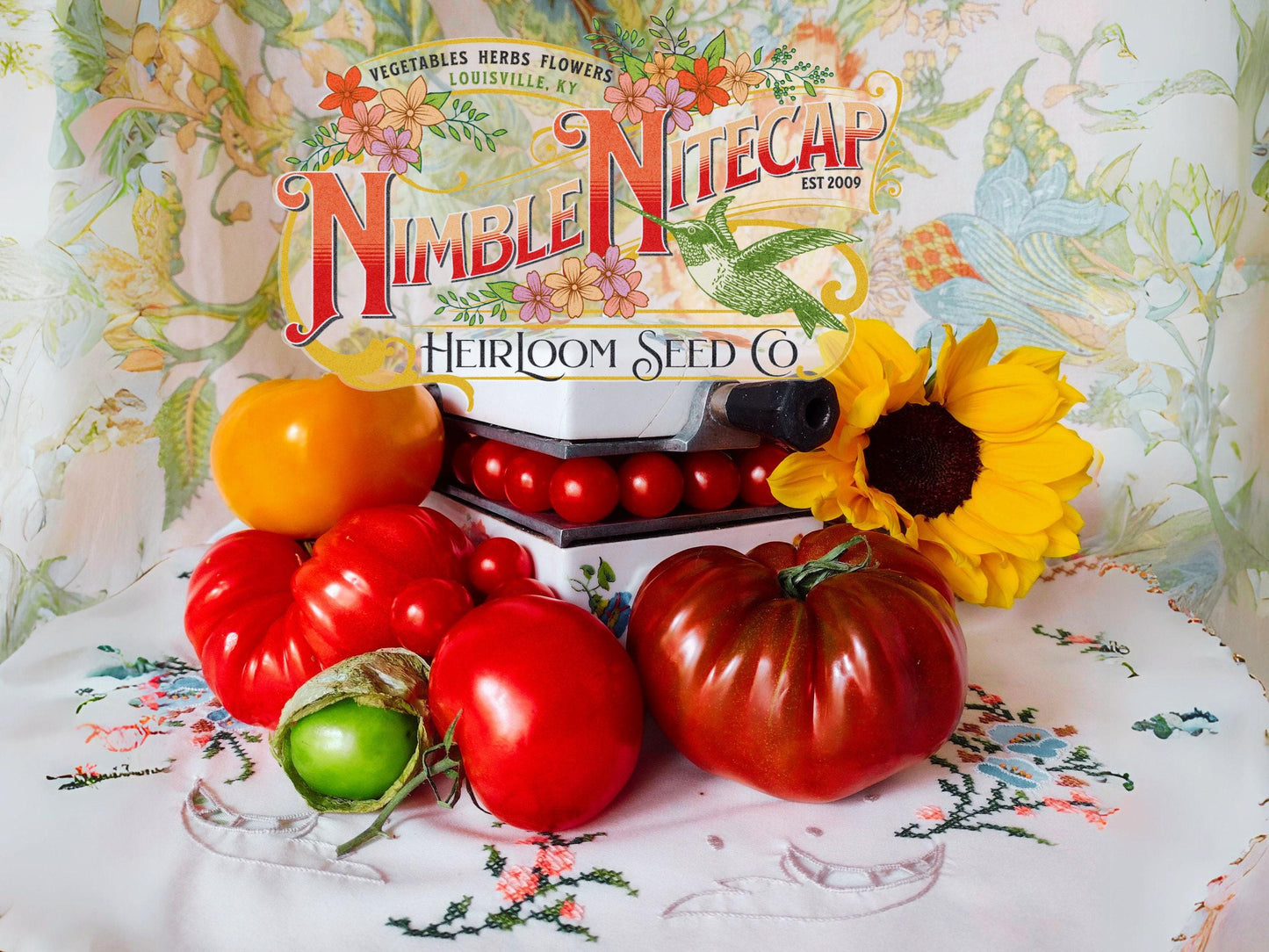This colorful butterhead is always sweet and tender, rarely bitter, quick to mature, and both cold and heat tolerant! Bronze Mignonette is a cherished heirloom butterhead lettuce variety known for its attractive bronze-tinged leaves and tender, buttery texture. This compact lettuce forms loose, rosette-shaped heads with ruffled, bronze-green outer leaves that transition to a pale, creamy green interior. Its mild, sweet flavor and crisp texture make it a favorite for salads and gourmet dishes.
First introduced in the 1800s by Mennonites from Germany and Holland, Bronze Mignonette has been a staple in gardens for over a century, appreciated for its heat tolerance and resistance to bolting, which extends its growing season in warm climates. This variety is a reliable choice for both spring and fall harvests.
* SCROLL DOWN FOR DETAILED GROWING INFO *
All Nimble NiteCap Seeds are:
• Heirloom
• Organic
• Non-GMO
• Open Pollinated
• Untreated
• US Grown
• growing instructions included
• Regular testing is conducted to uphold the highest germination standards, all the while employing appropriate seed storage techniques.
Sustainable Packaging & Shipping:
• NimbleNitecap seeds are packed in eco-friendly, compostable seed packets. Seed packets are printed in house with vegetable-based inks on biodegradable, recycled materials. (Small plastic bags are infrequently used to prevent the loss of very small seeds.)
• All orders are carefully packed and shipped with tracking via USPS First Class (or Priority, if selected) in padded ECOENCLOSE recycled and reusable mailers, or recycled boxes to protect your items in transit.
Most orders ship out the same or next business day! Please note that this time may be extended during peak season.
• FREE SHIPPING on all orders of $35 or more. Flat Rate shipping no matter how many packets you order.
* DIRECTIONS *
Common Names: Bronze Mignonette, Butterhead Lettuce
Latin Name: Lactuca sativa
Type: Leafy Green
Life Cycle: Annual
USDA Zones: 3 - 9
Stratification: Not required
Germination Ease: Easy
Sunlight: Full Sun to Partial Shade
Moisture: Prefers consistently moist, well-drained soil
Soil: Rich, well-drained soil with a pH between 6.0 and 7.0
Height: 6-8 inches
Spread: 6-8 inches
Color: Bronze-green leaves with a creamy green interior
Bloom Season: N/A (grown for leaves, not flowers)
Companion Plants: Suitable companions include radishes, carrots, and onions.
Potential Toxicity: Non-toxic to humans and pets
Climate Adaptability: Adaptable to a range of climates within its USDA zones; heat-tolerant and slow to bolt
~ Sowing ~
When to Start Inside: 4-6 weeks before your average last frost date.
When to Start Outside: Sow seeds directly in the garden as soon as the soil can be worked in early spring or late summer for a fall crop. For continuous harvest, sow seeds every 2-3 weeks.
Planting Depth: Sow seeds ¼ inch deep.
Watering: Keep the soil consistently moist but not waterlogged.
Light and Temperature: Lettuce prefers cooler temperatures between 60-70°F (15-21°C). It can tolerate some shade, especially in warmer climates, to prevent bolting.
Germination: Seeds typically germinate in 7-10 days.
~ Transplanting Seedlings Outdoors ~
Timing: Transplant seedlings outdoors when they have 4-6 true leaves and after the risk of frost has passed.
Location: Choose a sunny location with well-drained soil. In warmer climates, partial shade can help prevent bolting.
Spacing: Space plants 6-8 inches apart to allow for adequate growth and air circulation.
Transplanting: Gently transplant seedlings into the prepared soil, ensuring the root ball is covered and the plant is stable. Water well after planting.
~ Growing ~
Watering: Water regularly to keep the soil evenly moist. Mulching can help retain soil moisture and keep roots cool.
Fertilizing: Lettuce benefits from a balanced fertilizer or compost worked into the soil before planting. A light side-dressing of compost or fertilizer can be applied every few weeks during the growing season.
Pest and Disease Management: Monitor for pests such as aphids, slugs, and snails. Use organic pest control methods such as insecticidal soap or diatomaceous earth. Ensure good air circulation to prevent fungal diseases.
Maintenance: Harvest leaves as needed by cutting them off at the base of the plant. This will encourage new growth and extend the harvest period.
~ Harvesting ~
When to Harvest: Bronze Mignonette can be harvested when the heads are firm and about 6-8 inches across, typically 55-65 days after sowing.
How to Harvest: Cut the entire head off at the base or pick outer leaves as needed, allowing the inner leaves to continue growing.
Drying and Storing: Lettuce is best used fresh. For short-term storage, keep harvested leaves in the refrigerator in a plastic bag or container.
~ Seed Saving ~
Allow one or two plants to bolt and produce seeds. Once the flower heads have dried, collect the seeds and store them in a cool, dry place for future planting.
~ Additional Information ~
Forage for Pollinators: N/A (Lettuce is grown for its leaves, not flowers)
Origin: First introduced in the late 1800s, Bronze Mignonette has been a favorite heirloom variety for generations.
Nomenclature: The genus name "Lactuca" comes from the Latin word for milk, referring to the milky sap produced by the plant. The species name "sativa" means "cultivated."
History: Bronze Mignonette Butterhead Lettuce has been grown in American gardens for over a century, appreciated for its beauty, flavor, and resilience in warm weather.
Potential Toxicity: Non-toxic and safe for consumption by humans and pets.
Climate Adaptability: Prefers cooler temperatures and can be grown in spring and fall in most regions. In warmer climates, it may require partial shade and more frequent watering to prevent bolting.















